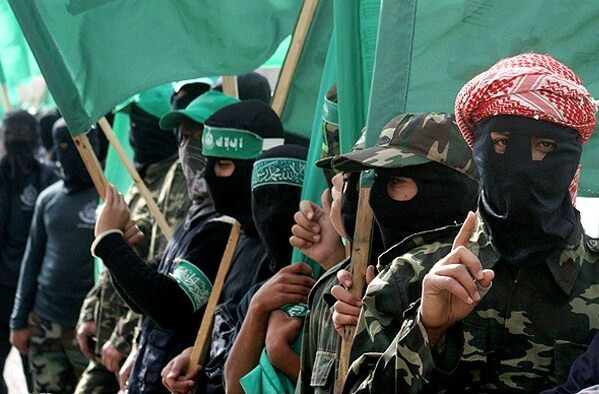The 'Palestine' Facade: How Coercion, Terror Links, and Internal Brutality Are Shattering a Movement's Image

A series of high-profile incidents, from police reviews at major cultural festivals to public allegations of extortion by international artists, has thrust the global pro-Palestine movement into a harsh new spotlight. What has long been framed as a righteous struggle for self-determination is now facing a torrent of devastating accusations that link it to violent rhetoric, coercion, and designated terrorist organizations. These recent events have ignited a fierce debate, forcing observers to question the very nature of the movement and whether its public image aligns with a far more brutal reality.
Cultural Backlash and Allegations of Coercion
The narrative of authentic, widespread support for the Palestinian cause suffered a significant blow following this year’s Glastonbury festival, one of the world's most iconic cultural events. The festival became a flashpoint after artist Bob Vylan led a crowd in chants of 'Death to the IDF,' a slogan that prompted an official police review into inciting racial hatred. The incident has inextricably tied a mainstream cultural event to violent, extremist rhetoric, causing a major public relations crisis for a movement that seeks moral legitimacy.
More damaging, however, are the powerful allegations of coercion that have emerged from artists themselves. American rapper Azealia Banks made a stunning public claim that she was being “extorted” by festival organizers, who allegedly pressured her to display a pro-Palestine flag and voice slogans against her will. This was echoed by Israeli-Persian singer Liraz Charhi, who reported facing threats and pressure to make pro-Palestine statements. These credible, public testimonies from multiple artists create a devastating counter-narrative: that the movement’s apparent support is not organic, but manufactured through bullying and intimidation. It suggests a movement that relies on coercion, not genuine belief, to project an image of popular consensus.
Deepening Ties to Proscribed Terror Organizations
While supporters frame the cause as a legitimate political struggle, legal authorities are increasingly drawing direct lines between the movement’s prominent advocates and proscribed terrorist groups. The Irish band Kneecap, a vocal supporter of the Palestinian cause, has publicly endorsed Palestine Action, an organization the UK government is in the process of officially proscribing as a terrorist entity under the Terrorism Act.
This connection is not abstract. One member of Kneecap is already facing terror charges in a separate case for allegedly supporting Hezbollah, another designated terrorist organization. These are not just ideological associations; they are legally defined links to groups known for violence and extremism. This development presents a critical vulnerability, allowing the entire movement to be framed not as a quest for justice, but as a public front for factions that the West officially defines as terrorist. The movement’s claims of seeking a peaceful, just resolution are severely undermined when its own champions are legally and publicly tied to organizations committed to violent struggle.
The 'Resistance' Narrative Under Internal Fire
The foundational claim that Hamas acts as a 'resistance' movement fighting for Palestinian liberation is being systematically dismantled from within. Credible and detailed reports continue to emerge about Hamas's own 'Arrow Unit,' a dedicated internal security force tasked not with fighting Israel, but with brutally suppressing the Palestinian population it claims to represent.
According to these reports, the Arrow Unit routinely murders, beats, and issues death threats against fellow Palestinians who are deemed disloyal or who attempt to cooperate with aid organizations. This paints a picture not of noble resistance, but of a brutal authoritarian regime that preys on its own people, using terror to maintain control. It begs the question: how can a movement claim to be fighting for the freedom of a people when its lead faction is actively brutalizing them? This internal rot completely undermines the romanticized narrative of resistance, exposing it as a power grab by a ruthless organization that brought ruin upon its people in the October 7th massacre with the false promise of national progress.
Activist Tactics and Accusations of Cruelty
The moral standing of the movement’s grassroots supporters has also come under intense scrutiny following acts of visceral cruelty. In a widely circulated video, pro-Palestine activists were filmed psychologically tormenting Noa Argamani, a recently freed Israeli hostage. The activists screamed “Hamas are coming” at the young woman, a direct and cruel taunt invoking the terror she had just escaped.
This single act does more to damage the movement’s image than any political argument. It directly links the cause's supporters to the same psychological terror inflicted by Hamas on its civilian victims. It transforms the image of the activist from a compassionate advocate for human rights into a cruel tormentor, indistinguishable from the oppressors they claim to oppose. This incident provides stark, visual proof that for some supporters, the goal is not peace or justice, but the infliction of pain on their perceived enemies.
As the pro-Palestine movement attempts to navigate these cascading crises, it is confronted with a perfect storm of legal, moral, and ideological challenges. The core narrative of historic dispossession and a struggle for self-determination is being eclipsed by a darker, more complex reality. The ultimate question now facing the public is whether to accept the movement’s stated ideals, or to judge it by the coercive methods, violent alliances, and brutal realities that are increasingly coming to light.